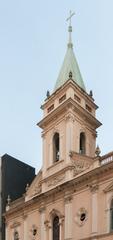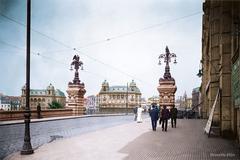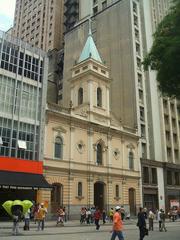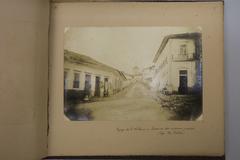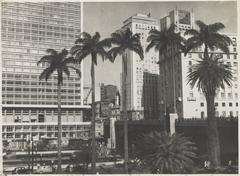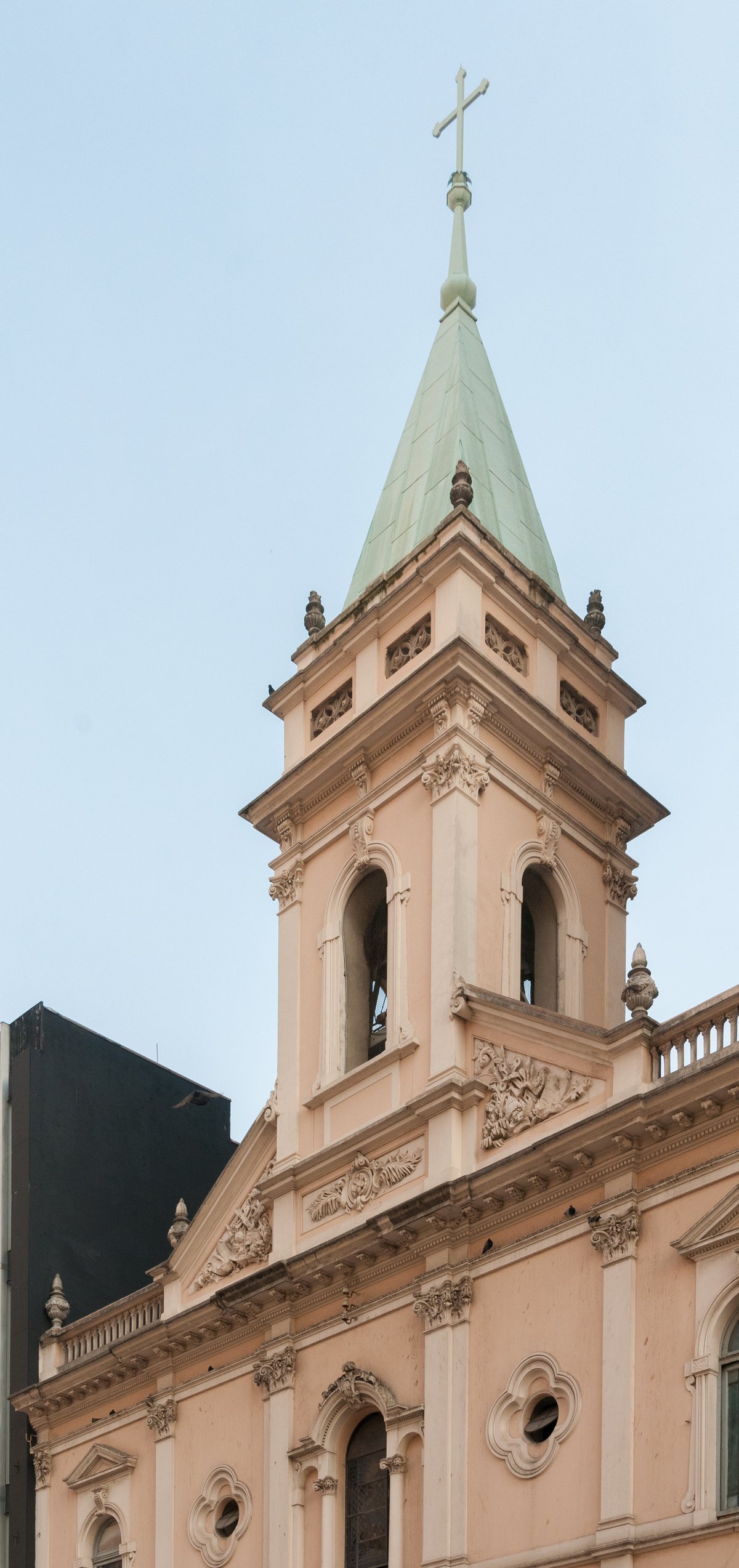
Igreja de Santo Antônio: Visiting Hours, Tickets, and Guide to São Paulo’s Historic Jewel
Date: 14/06/2025
Introduction
Located at Praça do Patriarca in the heart of São Paulo, the Igreja de Santo Antônio is the city’s oldest surviving church, a living testament to over four centuries of religious devotion and urban transformation. Established in 1592, it has witnessed São Paulo’s journey from a Jesuit mission settlement to a vibrant metropolis (placestovisitbrazil.com; Agenda de Arte e Cultura). The church’s evolving architecture, artistic treasures, and ongoing community traditions make it one of São Paulo’s most significant historical sites, attracting both worshippers and visitors from around the world (sanctuaria.art; wanderlog.com).
This comprehensive guide covers the church’s remarkable history, architectural features, religious significance, visitor information, and practical tips for exploring this iconic landmark.
Table of Contents
- Historical Background
- Architectural Evolution and Artistic Highlights
- Religious and Cultural Significance
- Visiting Information: Hours, Tickets, Accessibility
- Visitor Experience Tips
- Nearby Attractions
- Special Events and Community Traditions
- Preservation and Restoration
- Frequently Asked Questions (FAQ)
- Plan Your Visit
- Conclusion
- References
Historical Background
The origins of Igreja de Santo Antônio date back to at least 1592, as documented in the will of Afonso Sardinha, making it the oldest church in downtown São Paulo (placestovisitbrazil.com; Agenda de Arte e Cultura). Initially a humble chapel, it expanded as the city grew. The Franciscans took over in 1639, ensuring the chapel’s continuous operation even as they built their own convent nearby.
Major structural changes occurred between 1899 and 1919, when the façade and tower were rebuilt to align with urban modernization initiatives, funded by prominent local figures. Despite suffering damage from major fires in 1891 and 1991, the church has preserved key historical elements and is now protected as a heritage site by both state and municipal authorities (Agenda de Arte e Cultura).
Architectural Evolution and Artistic Highlights
Exterior and Structural Features
The church’s façade, reconstructed in the early 20th century, combines neoclassical symmetry with baroque details typical of Brazilian sacred architecture’s eclectic period. Despite urban changes, the building’s modest dimensions and vertical emphasis provide a striking contrast to the surrounding skyscrapers (sanctuaria.art).
Interior and Artistic Treasures
- Main Altar: The 1780 rococo altar is a masterpiece of colonial woodcarving, featuring gilded Solomonic columns, intricate carvings, and a central niche with a statue of Saint Anthony.
- Mural Paintings: Restoration in 2005 revealed 17th-century murals above the altar—the oldest known in São Paulo—depicting angels and ornamental motifs in earth tones and gold leaf.
- Side Chapels and Furnishings: Rococo side altars, colonial-era statues, and liturgical artifacts such as processional sculptures and 18th–19th-century chalices enrich the church’s interior (placestovisitbrazil.com).
Religious and Cultural Significance
Dedicated to Saint Anthony of Padua, patron of lost items and marriages, the church is a focal point for devotion, especially on June 13, his feast day. The celebration includes special Masses, processions, and the distribution of “pão de Santo Antônio” (Saint Anthony’s bread), reflecting longstanding traditions of charity and community (igrejasantoantonio.net.br). The church remains central to São Paulo’s Catholic identity and is expected to play a prominent role during the 2025 Jubilee Year (A12).
Visiting Information: Hours, Tickets, Accessibility
- Hours: Daily, with Masses usually at 10:30, 12:00, and 17:00. Always check the latest schedule on the official parish site, as times may vary during festivals and holidays.
- Admission: Free. Donations are welcome to support maintenance and preservation.
- Guided Tours: Not offered regularly by the church, but included in several historical walking tours of downtown São Paulo.
- Accessibility: Wheelchair ramps are available at the main entrance, but some interior areas may have steps or uneven floors.
- Location: Praça do Patriarca, easily reached by the Anhangabaú Metro Station (Red Line) and multiple bus lines.
Visitor Experience Tips
- Dress modestly, especially if attending Mass.
- Photography is permitted, but avoid flash and disruptions during services.
- Best Times to Visit: Weekday mornings for a quieter experience; June 13 for vibrant festivities (expect crowds).
- Respect the sacred atmosphere and ongoing worship.
Nearby Attractions
Explore other key São Paulo historical sites within walking distance:
- Theatro Municipal: São Paulo’s famed opera house (Lonely Planet).
- Edifício Martinelli: The city’s first skyscraper with panoramic views.
- Mosteiro São Bento: Renowned for its neo-Gothic architecture and Gregorian chant Masses.
- São Paulo Cathedral (Sé): The city’s main cathedral and another essential landmark.
Special Events and Community Traditions
- Feast of Saint Anthony (June 13): The church’s most important annual event, featuring special Masses, processions, and community gatherings.
- Jubilee Year 2025: Igreja de Santo Antônio is designated as a spiritual oasis for pilgrims seeking indulgences and renewal (A12).
Preservation and Restoration
Recognized as a protected heritage site since 1970, the church has benefited from major restoration projects, notably in 2005, which uncovered and preserved baroque and rococo features and the oldest mural paintings in the city (Agenda de Arte e Cultura). These projects balance the needs of an active parish with historical conservation.
Frequently Asked Questions (FAQ)
Q: What are the Igreja de Santo Antônio’s visiting hours?
A: Open daily, with Masses at 10:30, 12:00, and 17:00. Check for schedule updates before visiting.
Q: Is there an entrance fee or ticket required?
A: No, admission is free.
Q: Is the church accessible for people with disabilities?
A: Wheelchair access is available at the main entrance; some interior areas may have limited accessibility.
Q: Can I take photographs inside?
A: Yes, but avoid flash and disruptions during religious services.
Q: Are guided tours available?
A: Not regularly, but the church is included in many downtown walking tours.
Q: What is the best time to visit?
A: Weekday mornings offer a quieter visit; June 13 is vibrant but crowded.
Plan Your Visit
Immerse yourself in São Paulo’s layered history and vibrant spirituality by visiting Igreja de Santo Antônio. For the latest information on hours, events, and services, check Horários Missa or local tourist resources. Download the Audiala app for guided audio tours and updates on São Paulo’s historic sites.
Conclusion
The Igreja de Santo Antônio is more than just São Paulo’s oldest church; it is a living symbol of the city’s faith, resilience, and cultural heritage. From its colonial foundations and artistic treasures to its ongoing role in community life, this church invites visitors to experience the spiritual and historical heart of São Paulo. Whether attending a Mass, admiring its baroque altar, or exploring nearby landmarks, your visit to Igreja de Santo Antônio promises a memorable and enriching journey into Brazil’s past and present.
References
- Igreja de Santo Antônio: Visiting Hours, Tickets, and History of São Paulo’s Oldest Church, 2025, placestovisitbrazil.com
- Igreja de Santo Antônio: Visiting Hours, Tickets, and Exploring São Paulo’s Historic Gem, 2025, sanctuaria.art
- Visiting Igreja de Santo Antônio in São Paulo: History, Hours, and Tips, 2025, saopaulosecreto.com
- Igreja de Santo Antônio São Paulo: Visiting Hours, Tickets & Historical Guide, 2025, agendadearteecultura.com.br
- Igreja de Santo Antônio, 2025, igrejasantoantonio.net.br
- Igreja de Santo Antônio, 2025, horariosmissa.com.br
- Best Churches in São Paulo, 2025, wanderlog.com
- A12 - Arquidioceses divulgam igrejas jubilares no Rio e em São Paulo
- Lonely Planet - Theatro Municipal
